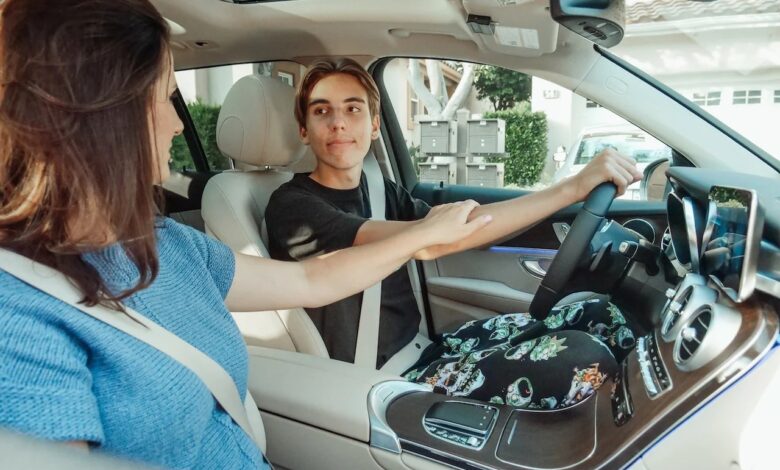When Can You Learn to Drive?

Learning to drive is a significant milestone in many people’s lives. It symbolizes freedom, independence, and the ability to travel without depending on others. However, the question of when you can learn to drive is influenced by several factors, including age, legal requirements, and personal readiness. This article explores these factors and offers insights to help prospective drivers determine the best time to start their driving journey.
Legal Age Requirements
One of the first things to consider when asking “when can you learn to drive” is the legal age requirement, which varies by country and region. In the UK, for example, you can start learning to drive a car when you are 17 years old. For those interested in riding a moped or a light quad bike, the minimum age is 16. However, there are exceptions, such as for individuals receiving the enhanced rate of the mobility component of the Personal Independence Payment (PIP), who can start learning to drive at the age of 16.
In the United States, the age requirements vary by state. Some states allow teenagers to begin learning to drive at the age of 14 with a learner’s permit, while others require them to be at least 16. In Canada, the minimum age to start learning to drive typically ranges between 14 and 16, depending on the province. Therefore, it’s crucial to check the specific legal requirements in your area before starting the learning process.
Preparing for the Learner’s Permit
Before you can get behind the wheel, most jurisdictions require prospective drivers to obtain a learner’s permit. This permit allows you to practice driving under the supervision of a qualified adult, usually a parent, guardian, or driving instructor. To get a learner’s permit, you will typically need to pass a written test covering the rules of the road, traffic signs, and basic driving laws. Studying a driver’s handbook, which is often provided by the local motor vehicle department, can be helpful in preparing for this test.
In addition to passing the written test, some regions may require an eye exam to ensure that your vision meets the standards necessary for safe driving. These requirements are in place to help new drivers develop the knowledge and skills they need to drive safely.
Personal Readiness: Physical and Mental Factors
While meeting the legal age requirement is essential, it’s also important to consider personal readiness when asking “when can you learn to drive.” Learning to drive requires a combination of physical coordination, cognitive skills, and emotional maturity. Here are some aspects to consider:
- Physical Coordination: Driving involves using multiple controls simultaneously, such as the steering wheel, pedals, and gear stick (in manual cars). Good hand-eye coordination and reflexes are essential for reacting quickly to changes in traffic conditions.
- Cognitive Skills: Understanding road signs, navigating traffic, and making quick decisions are all part of driving. It’s important to have the cognitive ability to process information quickly and make sound judgments.
- Emotional Maturity: Driving can be stressful, especially in challenging conditions such as heavy traffic, bad weather, or emergencies. It’s crucial for new drivers to be able to stay calm and focused without being easily distracted or frustrated.
The Role of a Driving Instructor
When considering the best time to start learning to drive, enlisting the help of a professional driving instructor can be highly beneficial. Instructors are trained to teach new drivers the rules of the road, proper driving techniques, and how to handle different driving scenarios. They can provide structured lessons tailored to the learner’s pace and ensure that they develop safe driving habits from the beginning.
Professional driving instructors can also help new drivers prepare for the practical driving test by familiarizing them with the test format and providing feedback on areas that need improvement. This guidance can boost the learner’s confidence and increase their chances of passing the test on the first attempt.
How Many Hours Does It Take to Learn to Drive?
The amount of time it takes to learn to drive can vary greatly from person to person. Factors such as age, learning style, and previous experience can all influence the learning process. In the UK, for instance, the Driver and Vehicle Standards Agency (DVSA) suggests that it takes most learners around 45 hours of professional instruction, plus an additional 20 hours of private practice, to reach the standard required to pass the driving test.
For more information on the time commitment involved, check out this detailed guide on how many hours it takes to learn to drive a car.
The Importance of Practice
Practice is a critical component of learning to drive. The more time you spend behind the wheel, the more comfortable and confident you will become. It’s beneficial to practice in a variety of conditions, such as during the day and at night, in good weather and bad, and in both urban and rural settings. This varied practice helps you become familiar with different driving scenarios and better prepares you for the challenges of real-world driving.
Parental Involvement
For younger learners, parental involvement can play a significant role in the learning process. Parents can provide valuable guidance, support, and additional practice opportunities outside of formal driving lessons. However, it’s important for parents to remain calm and patient while teaching their children to drive, as anxiety and frustration can negatively impact the learning experience.
Parents should also ensure that they are up to date with the latest driving laws and best practices, as driving regulations and techniques may have changed since they learned to drive. Attending a refresher course or studying the latest version of the driver’s handbook can be beneficial.
Adapting to New Technology
Modern cars are equipped with a range of technological features designed to enhance safety and convenience. From advanced driver assistance systems (ADAS) like lane departure warning and automatic emergency braking to GPS navigation and infotainment systems, today’s vehicles require drivers to be familiar with more than just the basics of operating a car.
New drivers should take the time to learn how to use these features correctly and understand their limitations. While these technologies can assist in driving, they are not a substitute for attentive and responsible driving.
Conclusion: Finding the Right Time for You
The question “when can you learn to drive” does not have a one-size-fits-all answer. It depends on a combination of legal requirements, personal readiness, and the availability of resources such as professional instruction and practice opportunities. By considering these factors, prospective drivers can make informed decisions about when to begin their driving journey.
Remember that learning to drive is not just about passing the test; it’s about developing the skills and habits necessary for a lifetime of safe driving. Whether you start at the minimum legal age or later, the key is to approach the process with patience, diligence, and a commitment to continuous improvement.



